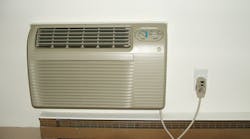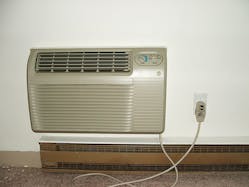How well do you know the Code? Think you can spot violations the original installer either ignored or couldn't identify? Here's your chance to moonlight as an electrical inspector and second-guess someone else's work from the safety of your living room or office. It's your turn to identify the violation.
Hint: A little hot under the collar
Find the Answer
While it may be difficult to find the exact Code section that describes this violation, it is still a violation nonetheless. You won’t find any sections in Art. 406 specifically stating it is a violation to install a receptacle above an electric baseboard heater. You also won’t find any enforceable wording in Art. 424 that says it is a violation to install an electric baseboard beneath a receptacle. However, you will find an Informational Note in Sec. 424.9 stating that baseboard heater instructions may prohibit their installation below receptacle outlets.
Section 424.6 requires electric baseboard heaters to be listed and labeled. Section 110.3(B) requires listed or labeled equipment to be installed and used in accordance with instructions included in the listing or labeling. When we look at these two requirements together, we can come to the conclusion that if the heater’s instructions do not allow the heater to be installed beneath a receptacle, then it would be a violation of Sec. 110.(3)(B) to do so. Heater instructions typically state that “in order to reduce the possibility of cords contacting the heater, the heater should not be located beneath receptacles.”





